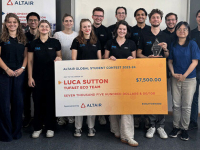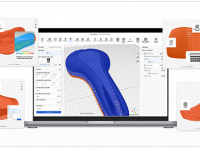
February 21, 2019
Traditionally design engineers take the lead in defining the shape of a product.
But the emerging computer-aided optimization, topology optimization, and generative design tools take the opposite approach, giving the software unprecedented autonomy to define the design geometry.
In the premiere episode of this brand new webcast series, we put ESTECO, COMSOL and Altair in the hot seat to discuss the following:
- How can design teams trust the software-proposed designs?
- What is the role of the human engineer in the new workflow?
- What does automation mean for the future of design engineering?
Please submit your own questions concerning generative design / topology optimization / algorithm-driven optimization so the panelists can address them in the webcast.
Download today
Latest News

CRP USA Elevates Wheelchair Racing Gear for Paralympics Champion
Using Windform XT 2.0 material and selective laser sintering, CRP USA created racing agloves that are lighter, more durable, and offer...

Altair Names Winner of the 2023-2024 Altair Global Student Contest
Student winner used Altair Inspire to slash his team's Shell Eco-marathon vehicle suspension weight by 41%, according to Altair.
Hexagon Unveils Digital Solution to Optimize Factories
By connecting asset digital twins to an accurate and up-to-date Digital Factory, companies can plan and operate more productive, flexible...

Hyperganic Launches HyDesign
Software reportedly made to democratize 3D-printed lattice design.
Eagle Point Software Partners with SOLIDX to Expand Reach in UK
Collaboration brings Pinnacle Series to SOLIDWORKS users in the UK.
Ohio R&D Center to Advance National Security Propulsion Technology
Purpose of center is to advance additive manufacturing and materials development technology for liquid rocket engines and solid rocket motors.
All posts
New & Noteworthy

New & Noteworthy: Fast, Flexible and Scalable Simulation – In the Cloud
Ansys Access on Microsoft Azure enables seamless deployment of industry-leading simulation tools...

New & Noteworthy: Safe, Cost-Effective Metal 3D Printing - Anywhere
Desktop Metal’s Studio System offers turnkey metal printing for prototypes and...

New & Noteworthy: Direct Neutronics Analysis on CAD
Coreform Cubit 2023.11 workflows enable neutronics directly on CAD for next-generation nuclear energy...

New & Noteworthy: Agile Engineering Collaboration
Authentise Threads is a new software tool for distributed communications and project...
